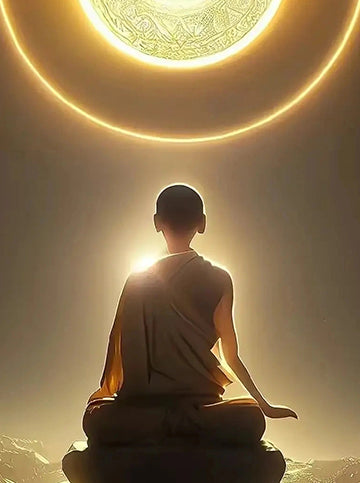8 products
-
Tibetan Hand Drawn Cinnabar Tsha Tsha Thangka
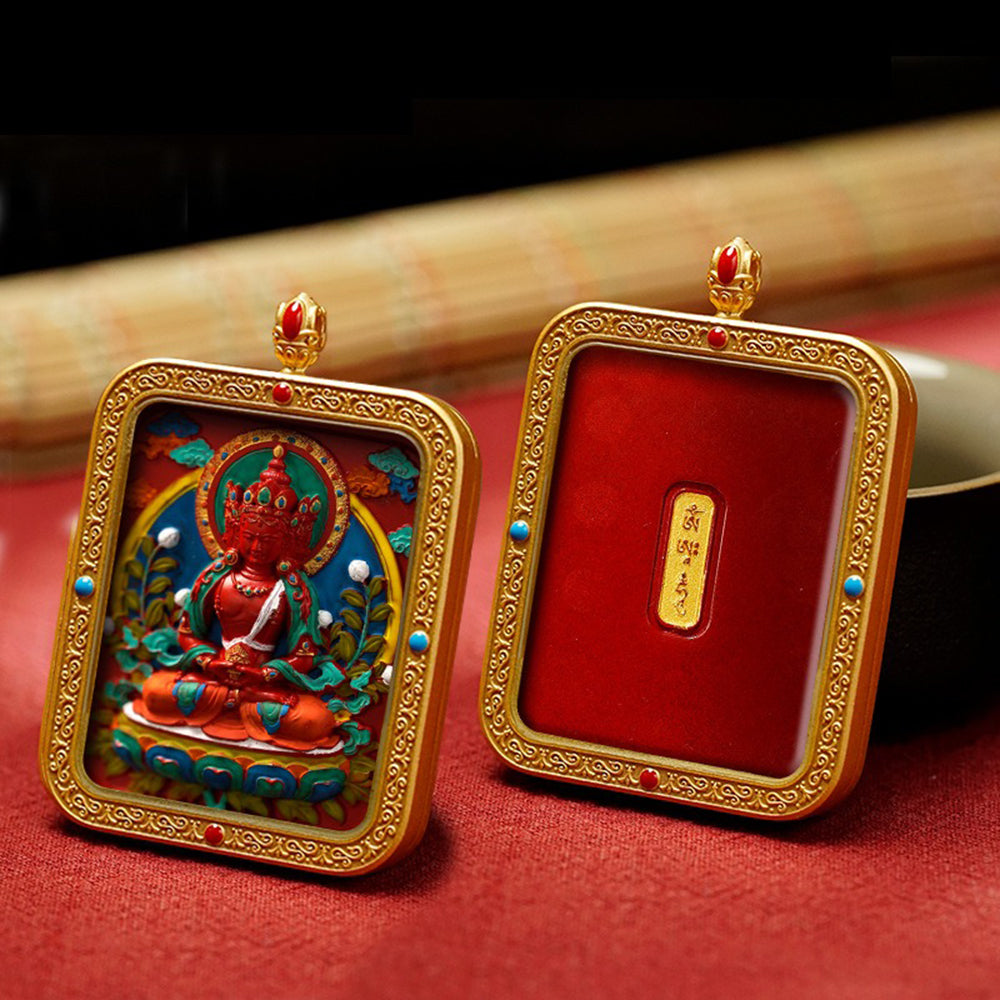 Tibetan Hand Drawn Cinnabar Tsha Tsha Thangka
Tibetan Hand Drawn Cinnabar Tsha Tsha Thangka- Regular price
-
$58.98 USD - Regular price
-
- Sale price
-
$58.98 USD
Quick view
-
Yellow Jambhala Decorative Painting Tibetan Thangka
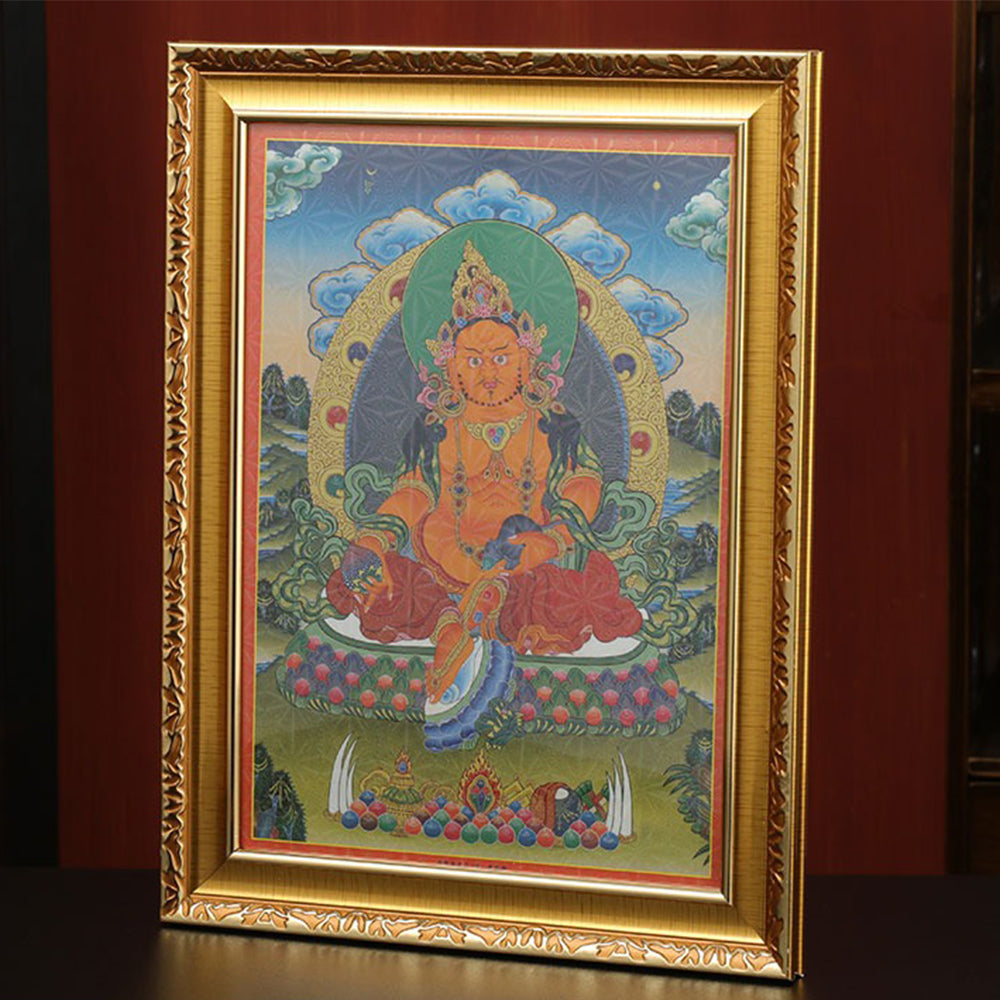 Yellow Jambhala Decorative Painting Tibetan Thangka
Yellow Jambhala Decorative Painting Tibetan Thangka- Regular price
-
$73.98 USD - Regular price
-
- Sale price
-
$73.98 USD
Quick view
-
Painted Bodhi Leaf Yellow Jambhala Ornament Thangka
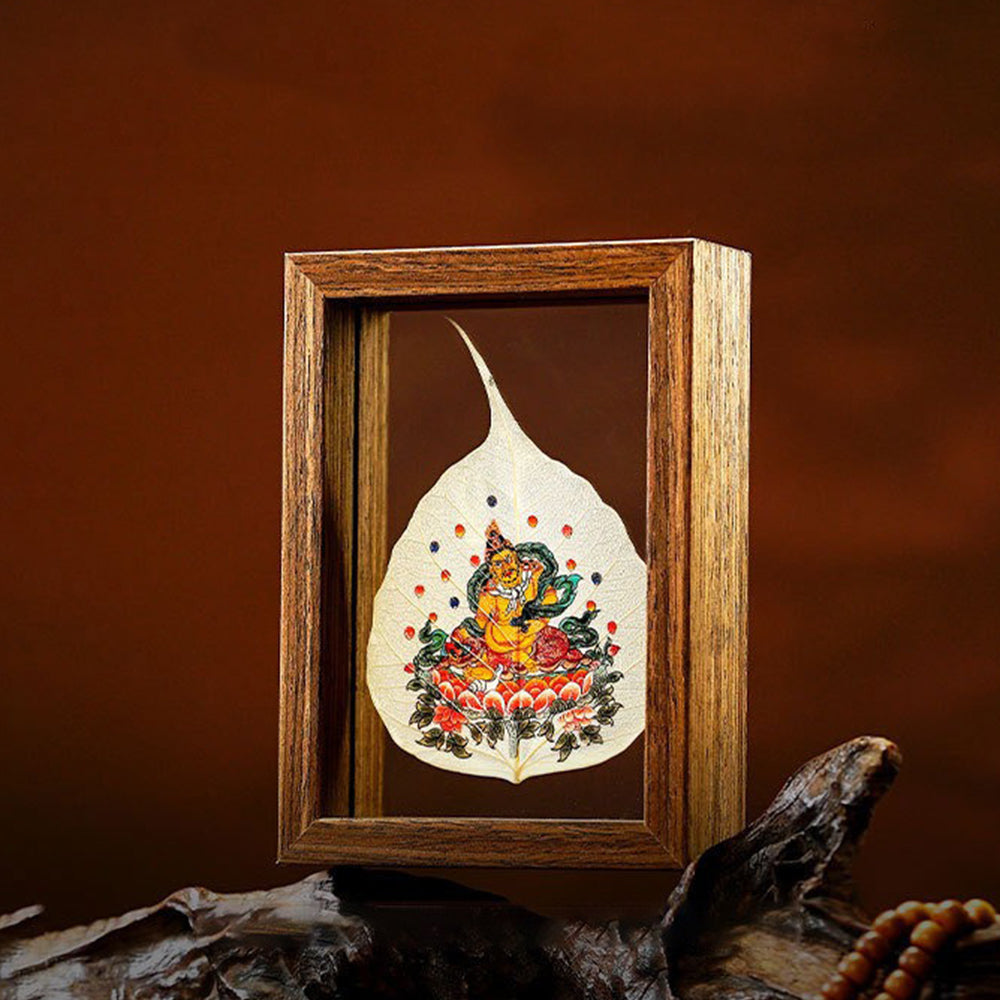 Painted Bodhi Leaf Yellow Jambhala Ornament Thangka
Painted Bodhi Leaf Yellow Jambhala Ornament Thangka- Regular price
-
$38.98 USD - Regular price
-
- Sale price
-
$38.98 USD
Quick view
-
Painted Buddha Statue Ornament Tsha Tsha Thangka
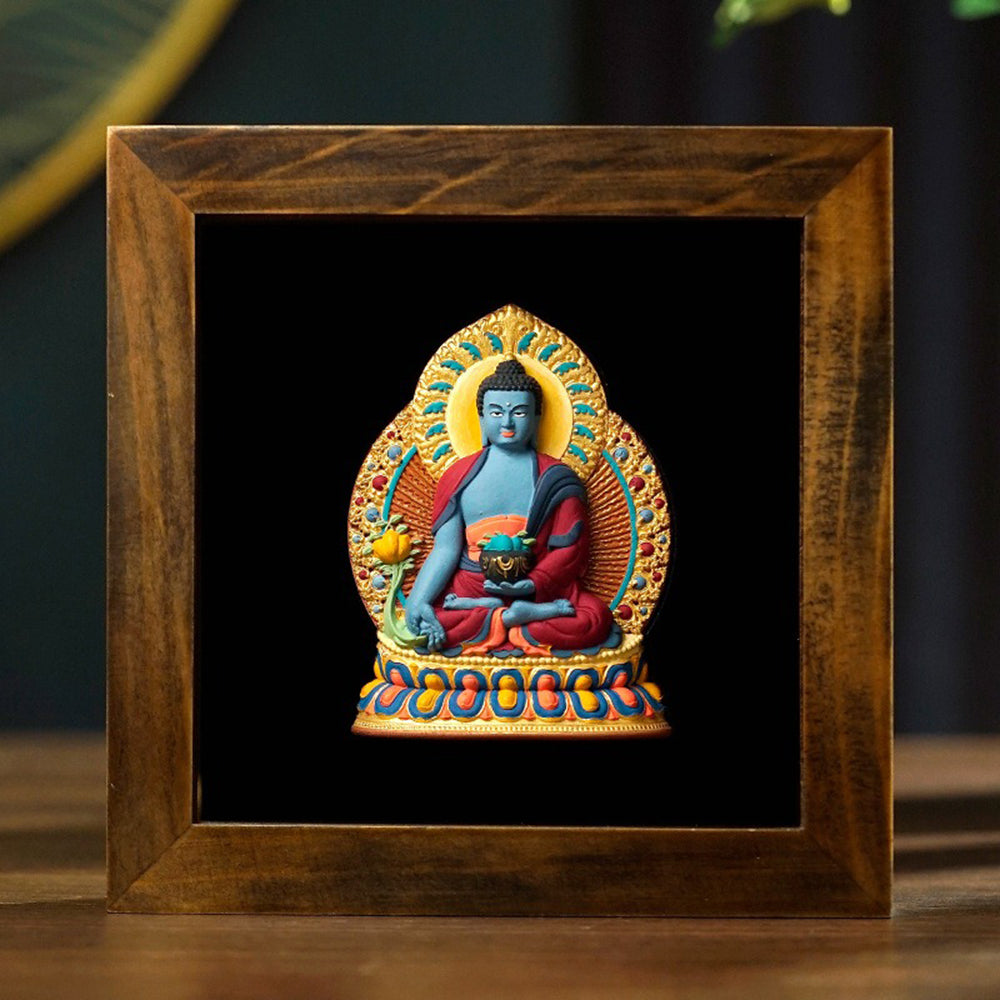 Painted Buddha Statue Ornament Tsha Tsha Thangka
Painted Buddha Statue Ornament Tsha Tsha Thangka- Regular price
-
$147.98 USD - Regular price
-
- Sale price
-
$147.98 USD
Quick view
-
Green Tara Painting Ornament Tibetan Thangka
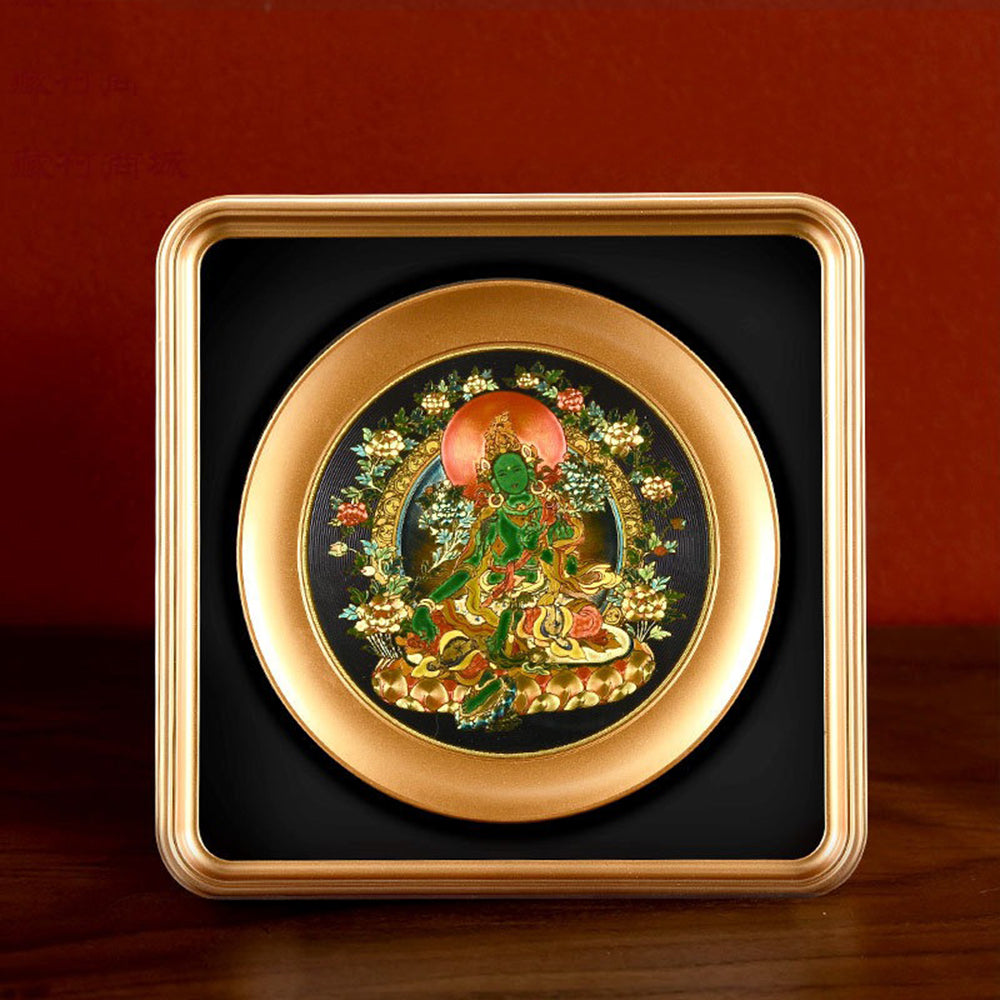 Green Tara Painting Ornament Tibetan Thangka
Green Tara Painting Ornament Tibetan Thangka- Regular price
-
$64.98 USD - Regular price
-
- Sale price
-
$64.98 USD
Quick view
-
Tibetan Hand-painted Mandala Hanging Thangka
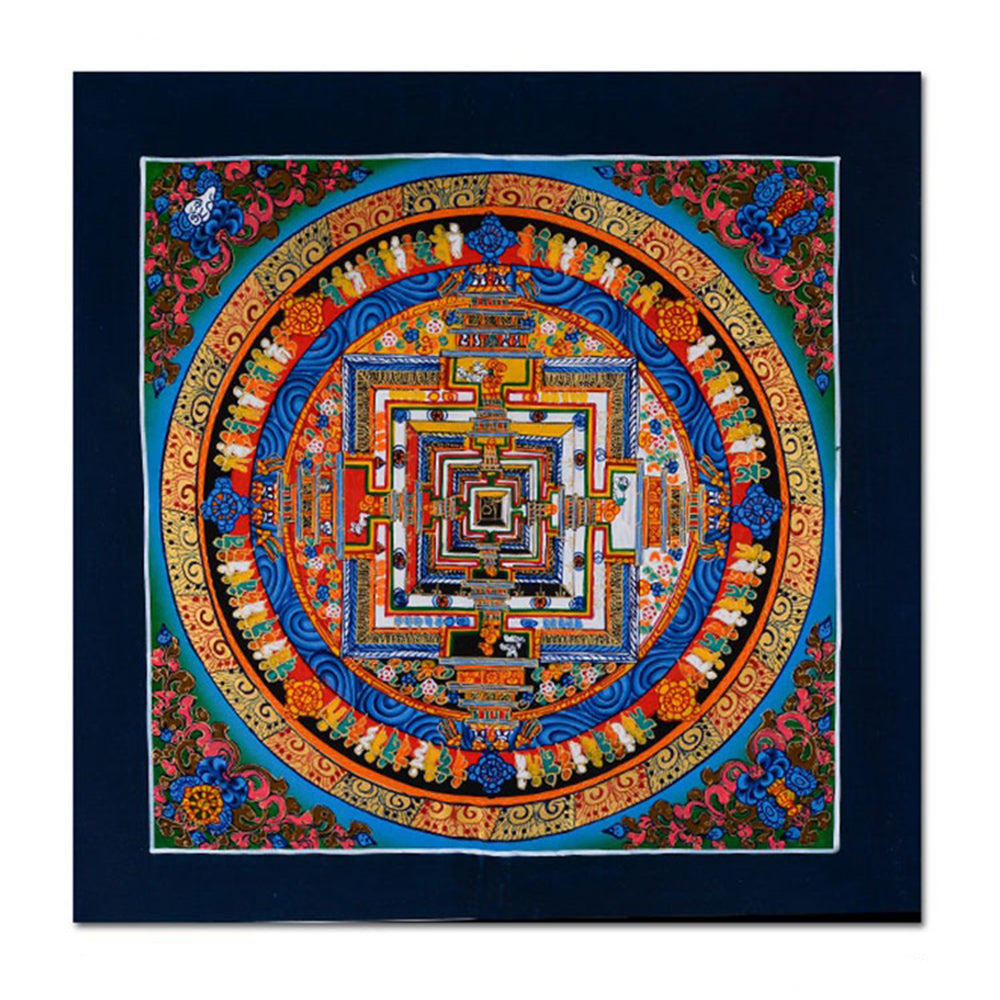 Tibetan Hand-painted Mandala Hanging Thangka
Tibetan Hand-painted Mandala Hanging Thangka- Regular price
-
$55.98 USD $78.98 USD - Regular price
-
- Sale price
-
$55.98 USD $78.98 USD
Quick view
-
Tibetan Hand-painted Six Characters Sanskrit Mantra Thangka
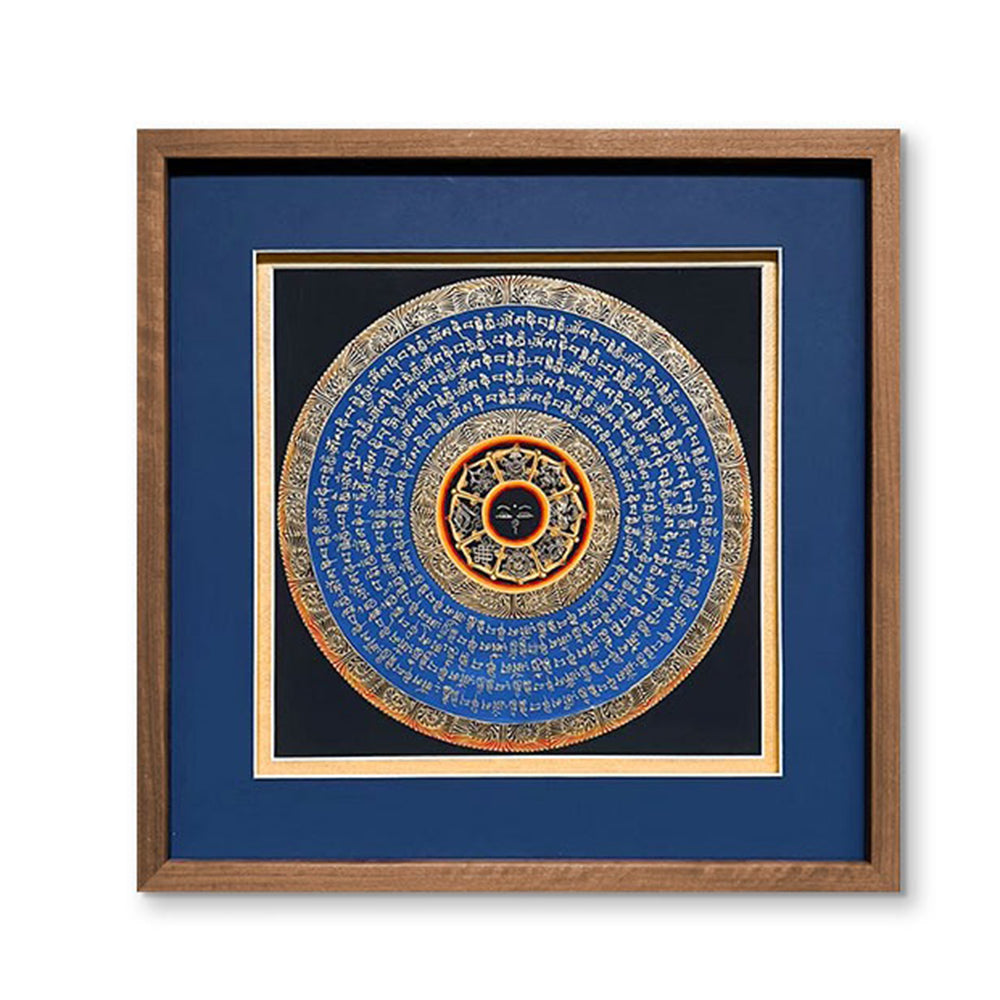 Tibetan Hand-painted Six Characters Sanskrit Mantra Thangka
Tibetan Hand-painted Six Characters Sanskrit Mantra Thangka- Regular price
-
$55.98 USD $78.98 USD - Regular price
-
- Sale price
-
$55.98 USD $78.98 USD
Quick view
-
Hand-painted Six Characters Sanskrit Mantra Hanging Thangka
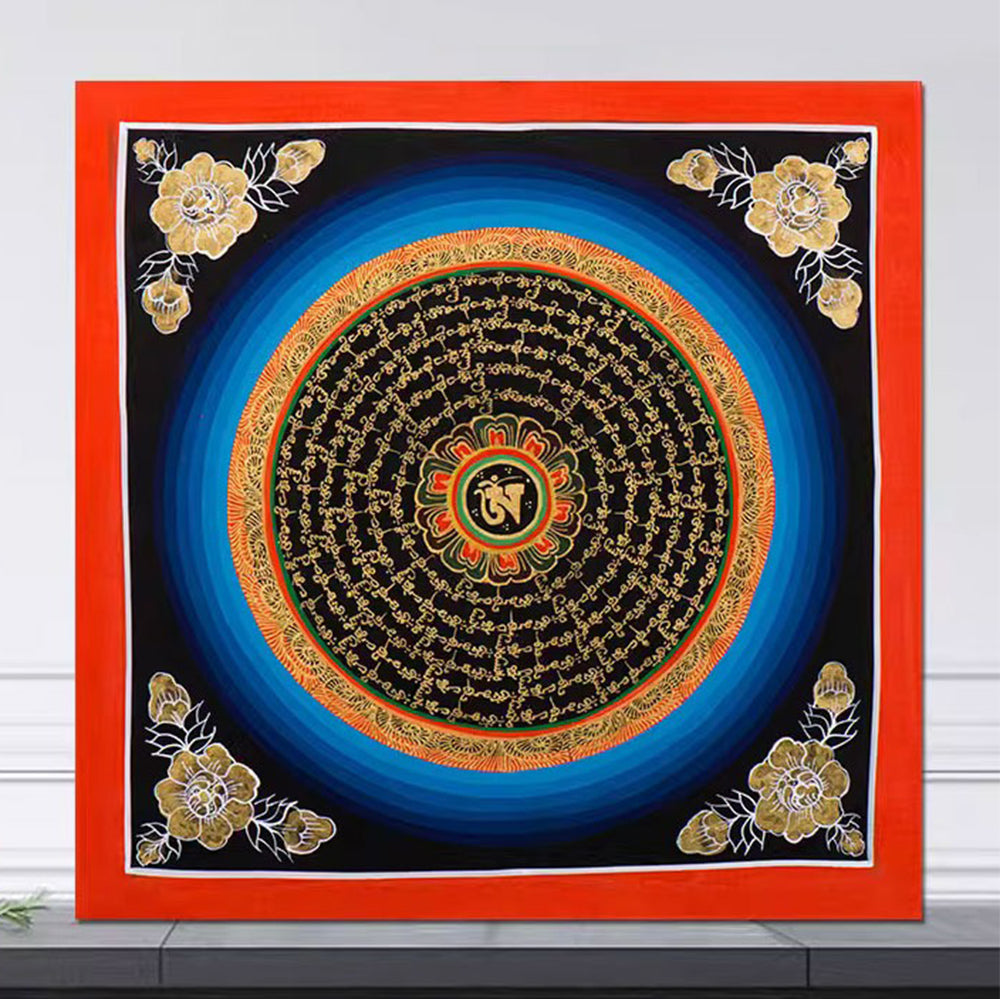 Hand-painted Six Characters Sanskrit Mantra Hanging Thangka
Hand-painted Six Characters Sanskrit Mantra Hanging Thangka- Regular price
-
$55.98 USD $78.98 USD - Regular price
-
- Sale price
-
$55.98 USD $78.98 USD
Quick view
What Is Thangka (Tangka)?
Thangka, also known as Tangga or Tangka, is a Tibetan transliteration and in brief means Tibetan scroll painting. Thangka is a unique form of painting art in Tibetan culture. It has distinct ethnic characteristics, rich religious themes, and unique artistic styles, depicting the sacred world of Buddha with bright colors.One can earn merit by worshiping Thangka and meanwhile evoke the associations about the meaning of Buddha statues by watching it.
Thangka was originated in the 7th century AD during the Tubo period and is an essential tool for practice for those Tibetan Buddhist monks and nuns. The theme and content of Thangka cover a great range of fields, from Buddhism and history, to Tibetan medicine and human anatomy and so on. Since Thangka is religious, artistic, intellectual, and interesting, it is called "the encyclopedia of the Qinghai-Tibet Plateau" by people at home and abroad.
Believers at home should also invite painters to draw Thangkas so that they could worship them. Some even personally paint and dedicate them to temples for hall decorations. The most spectacular scene would be the Sun Buddha ceremony during festivals and Buddhist ceremonies. Monks would show public and pilgrims the Thangkas collected in the temple, showcasing the glory of the Pure Land world and the greatness of the Buddha's ancestors. People sing and dance joyously, making it such a grand scene.
Drawing a Thangka is highly strict and complex. Before drawing, one should ask the Trulku for divination, choose an auspicious day, bathe and purify oneself, burn incense and pray, and recite scriptures while preparing materials. Then one should begin to prepare the canvas, make a draft, color the background, draw the outline, depict and paint the most important part of the picture with glazes of silver and gold, and consecrate and bless. Drawing a simple Thangka often takes more than ten days or dozens of days, while drawing a complex Thangka generally takes several months or even several years. Thangka must be drawn with natural pigments which are generally stable in performance, to make sure that the color would remain unchanged for hundreds of years.
The Thangka picture is an organic whole and one can not simply draw the figure of the gods without details to connect them.Lotus seats, light backs, auspicious clouds, flower vines, and other decorations can all play such a great role and at the same time also have a certain religious meaning. For example, a richly decorated jade palace, a lotus pond, spiritual birds are all indispensable when depicting the Pure Land of Buddhism. There are also some small embellishments on Thangka, such as the Buddhist seven treasures and the eight auspicious symbols which have beautiful meanings, and offerings below the Yidam to show respect for him.
The artistic value of Thangka is mainly reflected in its painting process. Each step of Thangka painting such as sketching, coloring, and gilding takes great effort and time and can not be rushed. Meanwhile, the pigments used for drawing Thangka are generally precious mineral gems such as gold, silver, pearls, coral, cinnabar, as well as plants such as saffron, rhubarb, and indigo. The most essential part of the Thangka painting is "painting in gold", which must use glazes of gold made from a huge amount of gold foil and gold flakes so that the painting would still remain resplendent and magnificent as new after hundreds or even thousands of years.
With the development of Thangka, numerous genres begin to emerge. New talents and new technique make Thangka more diversified and now Thangka is widely loved by people both at home and abroad, and is also known as a wonder of China's national art. By worshiping Thangka, one can pray for peace all year round, favorable weather, or to be transcended to the Pure Land.
The Origin and Development of Thangka (Tangka)
The painting history in Tibet can be traced back to more than 2000 years ago if murals are included. However, Thangka didn't appear until 7th century when Sontzen Gampo established the Tubo Dynasty. After unifying Tibet, Sontzen Gampo consolidated his empire through marriage with Princess Chizun of Nepal and Princess Wencheng of Han. The two princesses brought Buddhism into Tibet and built palace buildings such as Jokhang Temple and Ramoche Temple. According to the book "Catalogue of Jokhang Temple" written by the Fifth Dalai Lama, King Dharma (Sontzen Gampo) painted a statue of the White Ram Goddess with his own nasal blood and that was the first Thangka in the world. It is said that this first Thangka was hidden in the sculpture of the White Ram Goddess's stomach when Trulku Guozhuxi was making it. Therefore, It can be confirmed that Thangka painting was a new art form that emerged during the Sontzen Gampo period.
However, due to the long history of Thangka and the limitations of technology at that time, and materials such as paper and silk were difficult to preserve, the works that have survived to this day are extremely rare, with most of them were created in the Ming and Qing dynasties. A specialized painting agency was established in the Qing dynasty to draw murals of the Potala Palace, contributing to the development of Thangka art in Tibet. An official art academy was established later, known as the "La Ri Bai Ji Society", consisting of artists who inherited the skill of painting Thangka from their ancestors and those eminent monks with great merits. With exquisite skills and talents, these artists integrated the traditional techniques of Han Chinese painting into Thangka and created a large number of exquisite works. This period was therefore considered as the golden age of Thangka.
The Subject Matter of Thangka (Tangka)
Generally speaking, the subject matter of Thangka could be classified into religion and non-religion.
Riligious Thangka includes: Mandala painting, Ancestor's statue, life biography, Buddhas and Bodhisattvas, Arhat, the samsara of life and death, Western Paradise, etc.
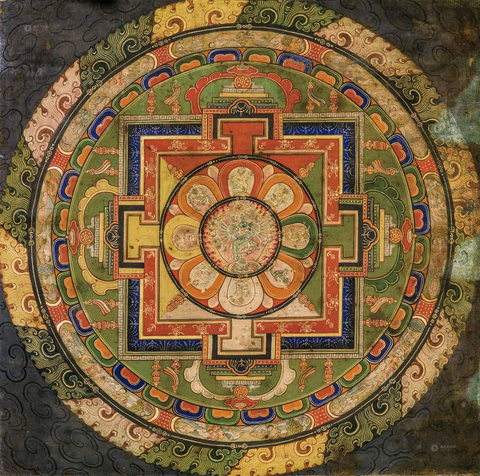
Mandala painting
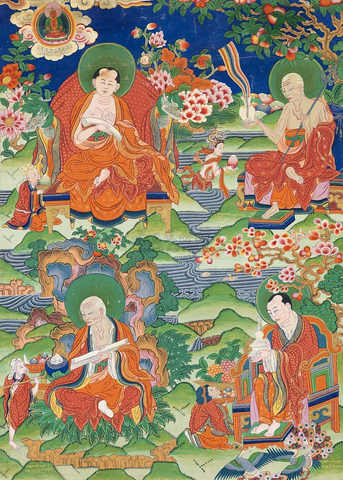
Arhat
Non-riligious Thangka includes: history, Tibetan medicine, legendary stories, astronomical calculations, etc.
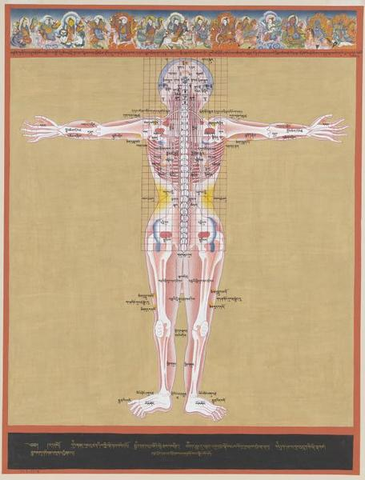
Tibetan medicine
Like other Buddhist art, the most common theme of Thangka is the image of Buddha. The Buddha is often placed in the center, and then starting from the upper corner of the picture, relevant people, places and stories are filled in a clockwise direction. Each Thangka generally depicts a relatively complete story. The composition of the characters is full, varied and balanced, and the scenery changes with the needs of the storyline, without being limited by history, time, or space.
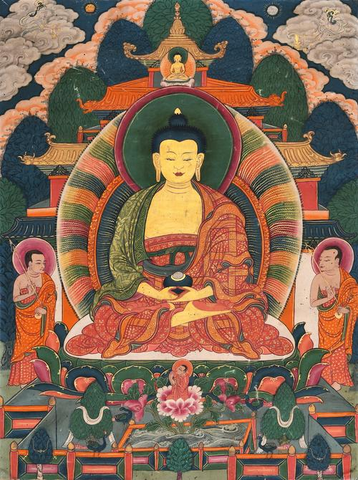
The Classification of Thangka (Tangka)
1. On the basis of the content, Thangka could be classified into Buddha statue Thangka, historical Thangka, biographical Thangka, mythological and legendary Thangka, calendar Thangka, astronomical Thangka, Tibetan medicine Thangka, etc.
2. On the basis of the size, Thangka could be classified into giant Thangka, regular Thangka, small Thangka.
3. On the basis of the material, Thangka could be classified into:
(1) Embroidered Thangka. This Thangka is embroidered with silk threads of various colors, and is often durable, tough and not easily damaged.

(2) Kesi Thangka. Kesi is the essence of Chinese traditional silk artworks. Bying using raw silk as the warp thread running through the entire width of the fabric, and then using soft colored bright silk as the weft thread to weave back and forth in different areas of the warp according to the pattern, Kesi Thangka often looks three - dimensional.
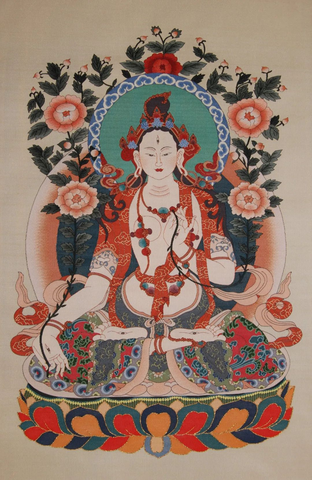
(3) Brocade Thangka. The texture of Brocade Thangka is mostly satin, and the weft thread is composed of various colored silk threads. This kind of Thangka is generally woven through jacquard and a lot of weaving processes.
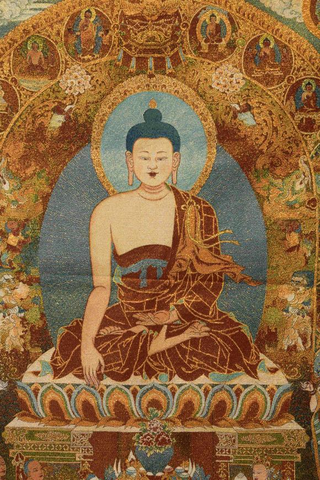
(4) Barbola. To make a Barbola, one must firstly cut various colored satin into shapes (figures, trees, birds and animals, flowers and plants, pavilions, etc.), and then paste them onto the base material of the Thangka. Barbola is therefore also known as the applique Thangka.
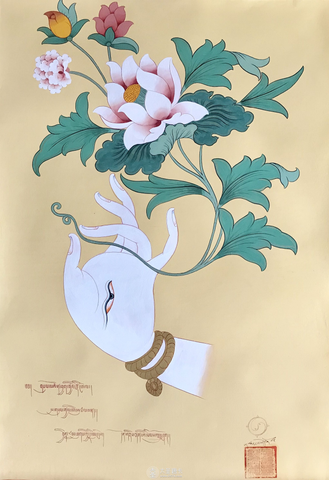
(5) Painting Thangka. Before making it into a Thangka, the artist often firstly paint on paper, cloth, cowhide, sheepskin, etc. Its painting form basically has no different from that of murals. What's more, with the development of Painting Thangka in the following centries, some were carved into printed boards for printing, which later known as "Printed Thangka".
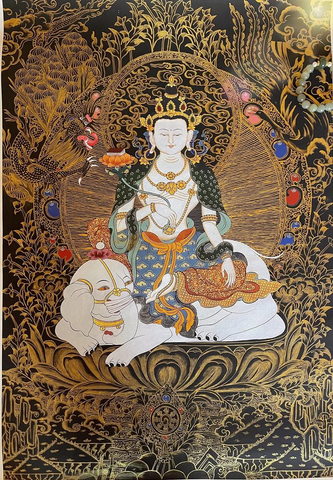
(6) Pearl Thangka. Pearl Thangka is a very special kind with extremly small quantity due to its complex process. Take the Tara Pearl Thangka for example, it was made by over ten thousands of pearl treasures and art stones, elegant but very expensive.

Finally, hand-painted Thangka can be classified into: colorful Tang (white background and painted in various colors), red Tang (red background), black Tang (black background), golden Tang (gold background), and silver Tang (silver background).
The Value of Thangka (Tangka)
Historical Value
Based on historical facts, some Thangkas show us significant political events and activities in history. For example, those depicting Sontzen Gampo's life and great achievements are well collected and displayed in Buddhist temples for people to worship. Moreover, Thangkas depicting the story of Princess Wencheng's visit to Tibet, which are considered as the works to praise the friendship between Tibetan and Han people, are also displayed in a conspicuous place of Buddhist temples. By depicting the scene of marriage proposal by emissary as well as the five difficulties created by the Emperor Taizong of Tang in order to embarrass the emissary, these Thangkas describe the historical events of the Tang-Tibetan alliance in the 15 years of the Governance during the Zhenguan Reign vividly. Plus, the celebration pictures displayed in Jokhang Temple and the Potala Palace depict the welcoming scene of the Tibetan people wearing festival costumes, singing and dancing joyfully when Princess Wencheng arrived in Luosuo, the capital of Tibet at that time. By simply admiring these Thangkas, one can deeply comprehend the development of human society as well as Tibetan culture.
Religious Value
The origin and development of Thangka are closely related to Tibetan Buddhism. The rise of Thangka art coincided with the introduction of Indian Buddhism into Tibet. At that time, the majority of Tibetan were living a nomadic life, and therefore the limited amount of Buddhist temples could not meet the religious needs of those nomadic believers. Thus the emergence of Thangka brought great convenience to those Buddhist believers since these scroll paintings were very easy to carry all the time. Thangka then began to blossom and was called "movable murals" due to its portability, and eventually Tibetan temples were becoming the palace of Thangka Buddhist painting art.
In terms of the function of Thangka, this kind of art is mainly used for serving abundant religious activities and religious life. Generally speaking, temples are the center of Tibetan religious culture where you can find most of the well-known Thangkas displayed in the halls. These Thangkas are hanging in the central place of the halls for those devout believers to worship and people could also display Thangkas in their own scripture halls and Buddhist niches.
Commercial Value
Although Thangka has a long history, it was not circulated frequently in the collection market until recent decades. In the early 1980s when the Chinese art collection market was just emerging, it only cost about two to three hundred yuan to buy a Thangka. But things changed quickly since the 1990s when Tibetan Buddhist artworks, especially Tibetan thangka painting entered the collection market, and the price of Tibetan Thangka rose rapidly to over a thousand yuan. Since 2006, its price double almost annually after Thangka being made the list of national intangible cultural heritage. Although its price is getting higher and higher in China, Thangka is still a minority of art collection and is also relatively cheaper compared to foreign countries.
The Functions of Thangka (Tangka)
Religious Instruction
As an form of art, Thangka is one of the significant media for Buddhist instruction. Believers could learn the religious doctrine, lection, as well as the stories of Buddhism by worshiping and admiring Thangka. What's more, these scroll paintings, often being vivid and interesting, could also help Buddhist believers to understand the life of the Buddha, the compassion and wisdom of the Bodhisattva, and other important Buddhist concepts.
Praying and Blessing
Thangka is also perceived that has the function to pray and bless in Buddhist culture. Buddhist believers often have Thangkas hanging in their family shrines or temples because they are convinced that by doing so they could be blessed and protected by Buddhas and Bodhisattvas. The Buddhas and Bodhisattvas depicted in Thangkas are considered to have great mercy and wisdom, and could also eliminate diseases, help people out of trouble, and bestow believers peace and happiness.
Cultural Inheritance
Thangka is an important part of Tibetan Buddhist culture and also one of the representatives of Tibetan traditional art. New artists inherit the exquisite skills of Buddha Thangka painting and Tibetan culture from their previous generation, and thus Thangka art could be well preserved and booming. For Tibetan people, Thangka is also a symbol of identity.
The Exchange and Trading of Artworks
As Thangka is gaining more and more attention all over the world, it has become an artwork that is worth collecting and investing. In the international market, the trading and exhibition of Thangka are gradually increasing. This not only provides a platform for the dissemination of Tibetan Buddhist culture, but also promotes the exchange of related culture and art.
The Placement and Offering of Thangka (Tangka)
1. Consecrated Thangka, especially traditional Tibetan Thangka and Tibetan Buddhist Thangka must not be placed in the bedroom, bathroom or kitchen where often have dim lighting and filthy atmosphere because consecrated Thangka is often perceived to have the same status as Buddhas and Bodhisattvas and therefore one must show great respect as well as awe.
2. Mandala Thangka, often used for guarding the house and warding off evil spirits, should be placed in the hallway.
3. Buddha statue Thangka, the most common theme of Thangka, should be placed in the living room and study room and other places with good lighting, making it easy for admiring and worshiping.
4. When placing a Thangka, one should bear in mind that it can't be placed near unclean objects. For instance, a Thangka should not be placed in bedside and sofas where often have a lot of clutter. Meanwhile, it is also necessary to avoid placing Thangka with some unclean items or items with strong smell in case of its cleanliness and aura of holiness being affected.
5. Thangka cannot be exposed to sunlight. The cotton of Thangka is easily to swell under strong sunlight, and therefore damage the colors on the paintings.
6. Thangka should be placed in a relatively dry environment and can not be stained with water or otherwise it would discolor.
7. Last but not least, it is important to maintain the integrity of Thangka. Thangka is a painting artwork and therefore one should seek the help from professionals once it is found damaged or stained. Meanwhile, behaviors such as hanging heavy objects on Thangka should also be avoided.
The Meanings of Thangka (Tangka)
As an important part of Tibetan culture, Thangka has a far-reaching meaning and rich connotations. Buddhist beliefs and Tibetan culture are well combined in Thangka through rich characters as well as vivid scene, showcasing the unique artistic charm of Thangka. The common meanings of Thangka include:
1. Wheel of life: The wheel of life, which usually consists of circles and spokes, is a common pattern in Thangka , indicating the eternity and cycle of life. This pattern symbolize the cycle and continuous evolution of life, and is used to show reverence and respect for life, as well as the pursuit and longing for life.
2. Auspicious patterns: Auspicious patterns are usually composed of images such as animals and flowers, symbolizing auspiciousness, happiness, and health. These patterns play an important decorative role in Thangka, while also express the pursuit and longing for a beautiful life.
3. Buddha statues and Bodhisattvas: In Tibetan culture, Buddhas and Bodhisattvas represent the faith and spirit of Buddhism. Therefore, Buddha statues and Bodhisattvas are often depicted as sacred and solemn and are used for expressing faith in Buddhism and the pursuit of wisdom, compassion, and power.
4. Mythical stories: Mythological stories and legends depicted in Thangka often have profound philosophical meanings and ethical concepts. By admiring and learning the mythological stories in Thangka, people can gain a deeper understanding of the spiritual values and connotations of Tibetan culture.
5. Natural elements: Natural elements such as clouds, mountains and rivers, flowers not only play a decorative role in Thangka, but also indicate the beauty and power of nature. In Tibetan Thangka painting, natural elements are used to express reverence and respect for nature, and meanwhile slao represent the concept of harmonious coexistence between human beings and nature.
In short, Thangka not only represents the profound spiritual value of Tibetan culture, but also demonstrates the pursuit and longing for a better life. By admiring Thangka, individuals can gain a profound understanding of human beings' contemplation and insight into life, nature, and society, while also gaining a deeper understanding of the unique charm and spiritual connotations of Tibetan culture.








